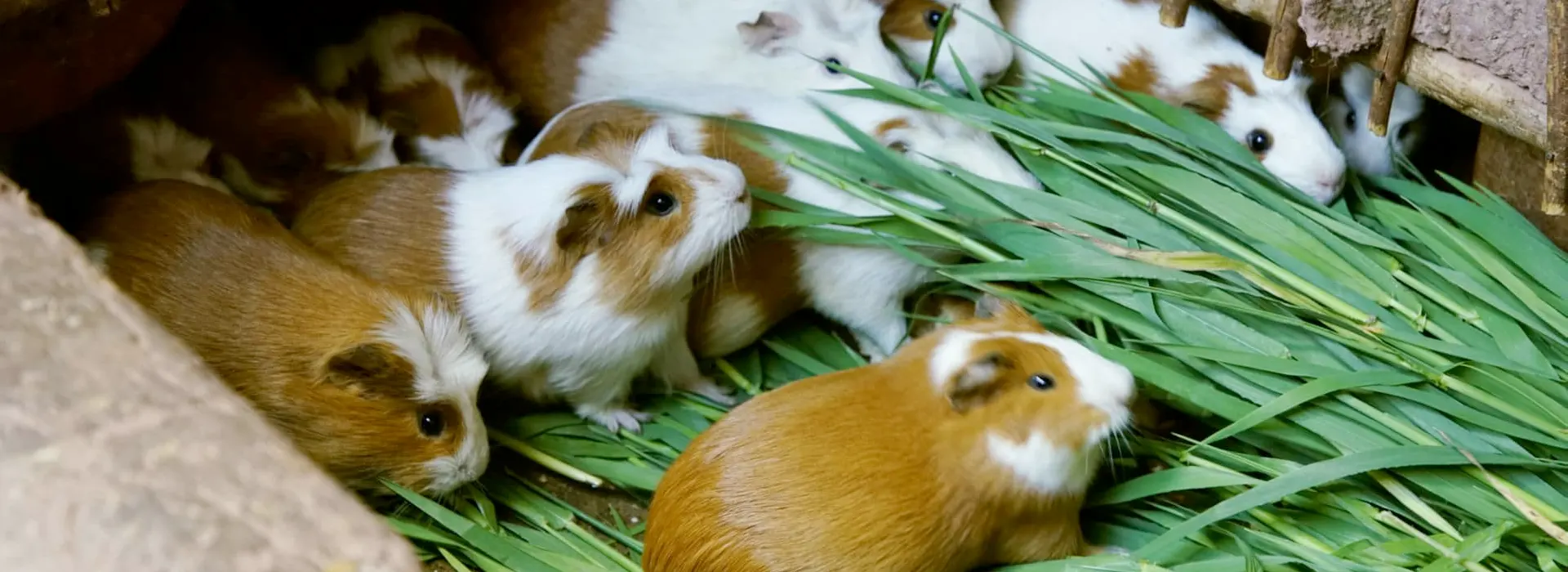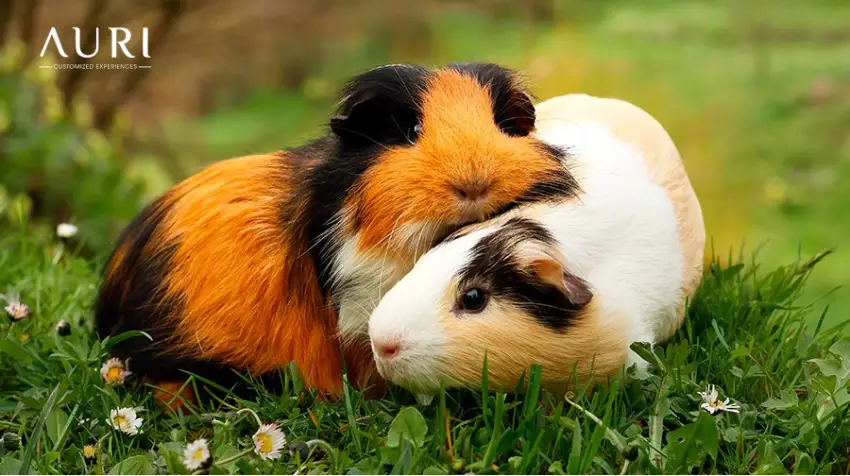
Cute Peruvian Guinea Pigs
1.- What is the Peruvian Guinea Pig?
The Peruvian guinea pig is a rodent that may be completely unfamiliar to those who have never heard of it. This small animal, also known as a cavy or guinea pig elsewhere, is native to the Andean regions of South America and has been a significant part of the region’s diet since pre-Columbian times.
Despite its unusual appearance, the guinea pig is an essential source of animal protein in the diet of many Peruvian communities and plays a fundamental role in local culture and the economy. In this article, we invite you to discover the fascinating characteristics, breeding, breeds, nutritional value, preparation methods, and where to savor tasty guinea pig dishes if you’re a tourist in Peru.
2.- History and Cultural Significance of the Peruvian Guinea Pig
Guinea pig meat, known for its delectable flavor, held a significant place in the pre-colonial diet of Peru, long preceding the introduction of chickens, pigs, and cows by European colonizers to South American territories. This enduring culinary tradition traces its origins back over 5,000 years, with scholars contending that the Incas, renowned for their advanced agricultural practices, domesticated these tender rodents.
This gastronomic legacy has firmly entrenched itself in the annals of Andean cuisine, elevating it to a status of utmost importance in Peru. The guinea pig’s journey through history transcends its role as a mere food source; it is emblematic of Peru’s rich cultural tapestry.
During the Inca era, this revered creature graced the tables of the nobility and even played a pivotal role in divination and sacrificial rites conducted by Inca priests. A compelling testament to its cultural significance can be found in the renowned religious painting, “The Last Supper,” adorning the Cathedral of Cusco, where Jesus and his disciples partake in a sumptuous feast, with a boiled guinea pig as the centerpiece.
Beyond gastronomy and spirituality, the guinea pig also lent its name and essence to a popular game known as “Tómbola de Cuyes.” This game, comprising a circular area divided into numbered squares, invites participants to wager on the squares the guinea pigs will enter. Prizes await those who select the correct number, adding an intriguing layer to the guinea pig’s cultural resonance.
Furthermore, the guinea pig is intertwined with familial customs and rites of passage in Peru. It is a tradition to present newlyweds, children, or guests with a pair of guinea pigs. However, these are not intended as pets but rather as a future source of sustenance, akin to raising chickens. Despite this, it is not uncommon to witness children forming affectionate bonds with these endearing creatures.
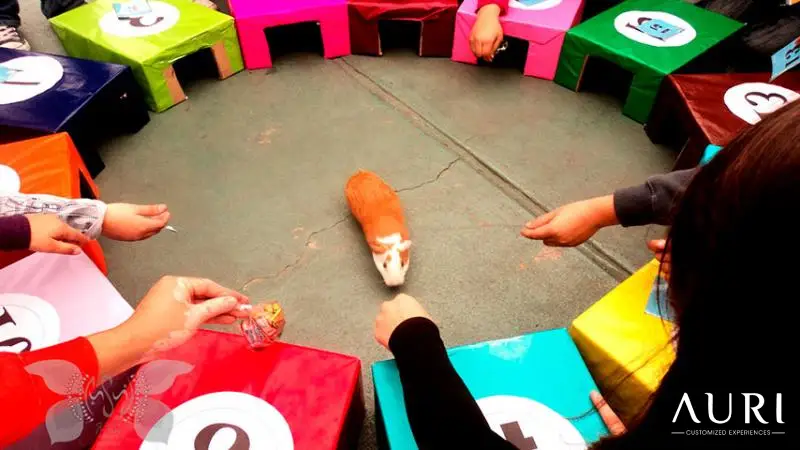
Peruvian Guinea Pigs Playing
3.- Characteristics and Varieties of the Peruvian Guinea Pig or cuy
When exploring the Peruvian guinea pig, its distinct characteristics and fascinating variations come to the forefront, enhancing its allure as a culinary and cultural icon.
Size: Typically measuring between 20 to 30 centimeters in length and weighing approximately 1 to 1.5 kilograms, these dimensions make the guinea pig a manageable and valuable source of meat for traditional Andean communities.
Fur: What truly distinguishes the Peruvian guinea pig is its splendid array of fur variations. Their coats showcase a remarkable diversity in colors and textures, ranging from short and velvety to long and silky. This broad spectrum of fur types not only adds to their aesthetic appeal but also underscores their adaptability and versatility.
The Peruvian guinea pig’s unique blend of size and fur diversity has allowed it to thrive in the challenging terrain and diverse climates of the Andean regions for centuries.
4.- Prominent Breeds of the Peruvian Guinea Pig
Giant or Peruvian Guinea Pig, cuy gigante: Known for its larger size compared to other breeds, it is ideal for meat production.
Andean Guinea Pig or Cuy: Valued for its resilience and adaptability to high-altitude Andean conditions.
Improved Guinea Pig: Selectively bred to enhance its growth rate and physical conformation.
5.- Nutritional Value of the Peruvian Guinea Pig: Source of Protein and Essential Nutrients
The guinea pig is an excellent source of animal protein, vitamins, and minerals. Its meat is lean and nutrient-rich, making it a beneficial dietary choice. Among the nutrients it provides are high-quality proteins, iron, zinc, phosphorus, and B vitamins. Guinea pig farming contributes to food security in local communities and diversifies their diets.
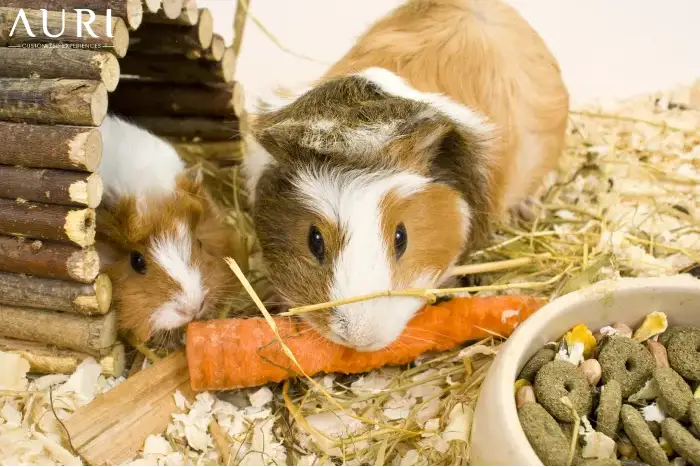
Peruvian Guinea Pigs
6.- The Importance of the Peruvian Guinea Pig Breeding
Nutritional Backbone:
Guinea pig meat is a vital dietary component for Peruvian families, providing essential nutrients.
Economic Catalyst:
It fosters economic growth and job opportunities, particularly in regions with economic challenges, thanks to its low space requirements.
Cultural Heritage:
Guinea pig breeding is a deeply ingrained cultural practice, passing down traditions through generations.
Community Livelihoods:
Beyond income, it empowers communities by promoting self-sufficiency and supporting education and development initiatives.
7.- Culinary Preparation of the Guinea Pig: Delights of Peruvian Cuisine
In culinary preparation, guinea pigs are used in various traditional dishes that highlight their unique flavor and tender texture. Some popular examples include:
- Cuy Chactado: The guinea pig is seasoned with herbs and spices, then fried until the skin is crispy.
- Cuy al Horno: The guinea pig is oven-cooked with aromatic seasonings like garlic and herbs.
- Cuy Frito: The guinea pig is perfectly fried, resulting in a crispy exterior and tender interior texture.
8.- Eating the Andean cuy or Peruvian Guinea Pig
When it comes to enjoying the Andean guinea pig, it is customary to partake in this culinary experience using your bare hands. In regions like Cusco or Arequipa, it is a common sight to witness locals relishing this dish in this traditional manner. You will find that any restaurant serving this delicacy allows patrons to embrace the cultural practice of eating guinea pig with their hands. In fact, attempting to consume it using utensils may raise some puzzled eyebrows.
It is advisable to have a pack of napkins within reach, as the indulgence can result in some delightful messiness. This delectable dish is typically reserved for special occasions, especially when you are honored as a guest by a local family. It is considered impolite to decline the opportunity to try it. After immersing yourself in the myriad of enriching Peruvian tours, treat yourself to the ultimate relaxation by savoring this exquisite Peruvian delicacy.
Flavor characteristics of the Cuy, How does Cuy taste like?
Rest assured, the flavor profile of the Andean guinea pig is truly remarkable, far from unpleasant. Numerous diners, including ourselves, affirm that its meat bears resemblance to succulent chicken, albeit with a more robust texture and a slightly oily consistency. For those hailing from Europe, the taste might bring to mind the flavors of rabbit, characterized by darker meat.
Regardless, the palatable nuances of the guinea pig’s meat are sure to astonish you. Moreover, it is noteworthy that this prized meat exhibits a remarkably low cholesterol content while boasting a generous protein percentage. It serves as a remarkable testament to the biodiversity found in Peru, showcasing the diverse range of animals and culinary offerings present in the region. Admittedly, owing to the guinea pig’s diminutive size, the quantity of meat yielded may not be substantial. Nonetheless, each mouthful promises a unique and unforgettable experience.
9.- Where to buy cuy (Guinea Pig)?
In countries where the Andean guinea pig is cherished as a pet, regulations strictly forbid its consumption as a source of meat. Nevertheless, for those with a culinary curiosity or a desire to savor this unique delicacy, specialized meat and grill stores offer a pathway to indulge in its distinctive flavors.
In Cusco and Peru, you won’t typically find Cuy (Guinea Pig) in regular butcher shops. Instead, it is commonly sold in local markets or traditional establishments. These markets offer a vibrant and diverse selection of fresh produce, local specialties, and of course, Cuy. It is in these markets that you can experience the bustling atmosphere and immerse yourself in the culinary traditions of Peru.
When visiting Peru, make sure to explore the lively local markets, such as San Pedro Market in Cusco or Mercado Central de Lima. Here, you can often find dedicated sections or vendors specializing in Cuy.
It’s important to note that the availability of Cuy might vary, so it’s recommended to go earlier in the day when the market is fully stocked. Engaging with local vendors can also provide insights into the best cooking methods and recipes to truly appreciate this traditional Peruvian delicacy.
If you are an adventurous culinary enthusiast, you might be deliberating over the differences between a guinea pig and a cuy. Interestingly, the Andean Guinea Pig does not differ significantly from the Guinea Pig varieties found in the United States or Europe. The main distinction lies in the size, with the Andean species notably larger. This size difference stems from intentional breeding and fattening of these animals for culinary purposes. Although the variances are subtle, they contribute to a distinct taste and texture that have earned the Andean guinea pig its esteemed place in the gastronomic traditions of the Andean region.
“In Cusco, cuisine is a bridge between the past and the present, and cuy is the secret ingredient.”
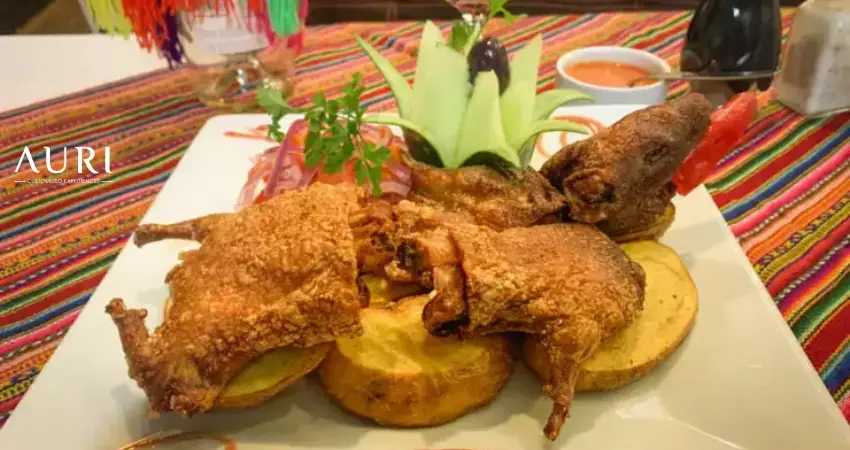
Peruvian Guinea Pig Dish
10.- Where Can You Savor Guinea Pig in Cusco as a Tourist?
If you’re a tourist exploring Peru and eager to relish these gastronomic treasures, we highly recommend seeking out renowned picanterías, some of which can be found right in the heart of Cusco city. These esteemed establishments are known for their commitment to preserving culinary traditions and offering a true taste of regional delicacies, such as guinea pig prepared in a myriad of delectable styles.
Additionally, keep an eye out for local gastronomic festivals that celebrate the rich tapestry of Andean cuisine, where you’re likely to encounter this unique culinary experience.
Moreover, you’ll find that many touristic restaurants across Cusco proudly feature guinea pig on their menus. According to TripAdvisor, some notable options include:
- Pachapapa – Situated in Cusco, Pachapapa offers a cozy ambiance and a range of guinea pig preparations amidst the city’s historical charm.
- La Cusqueñita – Another Cusco gem, this restaurant is well-regarded for its traditional Andean cuisine, including guinea pig.
In summary, the Peruvian Cuy is a gastronomic and cultural treasure with deep historical roots. Its breeding, varieties, nutritional value, and its prominent place in modern Peruvian cuisine make it a fascinating subject to explore and savor while visiting this beautiful Andean country. Here at Auri Peru Travel, we invite you to do not miss the opportunity to taste exquisite guinea pig dishes and immerse yourself in Peru’s rich culinary tradition.
Peru has many incredible places to discover, with many years of working at the travel industry, Auri Travel is happy to help with your travel plans to Machu Picchu and extraordinary places around Peru.
Reach out to us now to learn more about adding Peruvian Guinea Pig to your adventure!.




